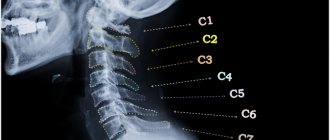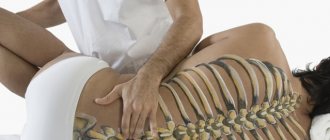Everyone experiences episodic painful contractions of the leg muscles throughout their lives. The causes of physical discomfort vary. Most of them can be eliminated by adjusting your lifestyle and diet. But if your legs cramp regularly, you need to seek medical help. Sometimes serious vascular or systemic pathologies manifest themselves in this way.
Why do leg cramps occur?
Crumpy syndrome
Represents short-term painful muscle contractions.
It is extremely widespread, according to various sources, detected in 20-90% of adults, more common in old age. It can occur as a physiological reaction to various external influences, be idiopathic or symptomatic. In the vast majority of cases, the calf muscles are affected. During a cramp, sharp pain and plantar flexion of the foot are noted. Manifestations persist for several seconds or minutes and decrease with walking, massage, and passive extension of the foot. After the attack, minor pain and increased sensitivity of the calves are observed for 1-2 days. The syndrome often appears at night and is preceded by fasciculations. Provoked by the following circumstances:
- Physical factors.
Spasms in the legs bother you after unusual intense exercise - long walking, training on exercise equipment. They develop in water, especially cold water, which is associated with the danger of drowning. Other irritants include dehydration, hypothermia, and consumption of salty foods. - Idiopathic cramps.
They appear for no apparent reason and are detected both at rest and during movement. Observed daily or several times a week. May be associated with hereditary predisposition (detected in several members of the same family). - Somatic diseases.
Cramps are potentiated by chronic renal failure, liver cirrhosis, chronic heart failure, and rarely by glycogenosis and paraneoplastic syndrome. - Neurological diseases.
The syndrome occurs against the background of pathologies with hypertonicity and spontaneous muscle activity: ALS, multiple sclerosis, Parkinson's syndrome, Charcot-Marie-Tooth disease, crampie-fasciculation syndrome. Sometimes accompanied by osteochondrosis, mono- and polyneuropathy.
Flat feet
Leg cramps are detected in all types of flat feet: longitudinal, transverse, mixed. They are caused by improper load distribution, which entails constant overwork of the muscles of the distal limbs. They are more often observed in the afternoon and develop after prolonged standing or walking. May disturb you at night.
Vascular diseases
Spasms in vascular diseases are caused by deterioration of metabolic processes, hypoxia, and a decrease in the amount of ATP in cells. Detected in the following pathologies:
- Varicose veins.
The symptom is disturbing mainly in the stage of decompensation, more often observed at night. It is combined with increased fatigue, swelling, dull pain, constant heaviness in the legs, pronounced external changes in the veins, and trophic disorders. - Obliterating atherosclerosis.
More often diagnosed in older people. Pain and cramps in the calf muscles are preceded by numbness of the feet, burning, chilliness, and increased sensitivity to cold. After a certain period of time (usually insignificant), intermittent claudication is added to the listed symptoms. - Obliterating endarteritis.
Young men predominate among the patients. Symptoms resemble the clinical picture of atherosclerosis and include chilliness, numbness of the fingers, paresthesia, spasms in the feet and calf muscles, and intermittent claudication. A less favorable course and rapid development of trophic disorders are characteristic. - Thromboangiitis obliterans.
Always two-sided. Along with cramps, pain, increased sensitivity of the feet, hemorrhages in the toes, Raynaud's syndrome and migratory thrombophlebitis of the distal legs are detected. As it progresses, severe trophic disorders occur.
Endocrine diseases
Convulsive syndrome is most typical for hypoparathyroidism and is caused by increased neuromuscular excitability with low levels of parathyroid hormone. As a rule, the arms are symmetrically involved first, then the legs, and the flexors are predominantly affected. Sometimes spasms spread to the facial muscles, muscles of the trunk, and internal organs. In mild cases, attacks last 1-2 minutes and are repeated 1-2 times a week. In severe cases, there are many daily paroxysms lasting up to several hours.
In some cases, spasms bother patients with severe dysfunction of the thyroid gland due to hyperthyroidism and hypothyroidism. May be combined with myoclonus, cognitive and behavioral disorders. In diabetes mellitus, the cause of cramps in the legs is diabetic macroangiopathy, which occurs 10-15 years after the manifestation of the disease and is found in approximately 10% of patients. The symptom is complemented by chilliness, numbness of the feet, swelling, sharp pain in the legs, thighs, and sometimes buttocks, which intensifies with movement.
Fluid and electrolyte disturbances
Tonic convulsions caused by changes in electrolyte balance occur in diseases of the gastrointestinal tract (malabsorption, condition after resection of the stomach and intestines), kidney diseases, endocrinopathies. The cause can also be external and internal bleeding, intestinal infections, poisoning, accompanied by repeated vomiting and frequent diarrhea. The symptom is determined in such conditions as:
- Hypocalcemia.
Foot cramps are combined with spasms of the hands, facial and chewing muscles. - Hypomagnesemia.
Carpopedal spasm is complemented by trembling of the limbs, hyperreflexia, tetany, weakness, drowsiness, and dyspeptic disorders. - Hyperkalemia.
Convulsive attacks are short-lived and quickly replaced by decreased muscle tone. Bradycardia, arrhythmias, and pain in the epigastric region are detected. - Hyper- and hyponatremia.
Unlike other conditions, the symptom is generalized. Paroxysm is preceded by respiratory distress, nausea, and vomiting.
Hypovitaminosis
Disorders of muscle contractile function are most often found with a deficiency of B vitamins:
- Hypovitaminosis B1.
Cramps in the lower leg muscles are characteristic of the dry form of beriberi. Neuritis and changes in pain and temperature sensitivity of the lower extremities are noted. - Hypovitaminosis B2.
Neurological disorders are determined during a long course of the disease, including spasms, paresthesia, ataxia, hyperreflexia. The listed symptoms are preceded by weakness, damage to the eyes, skin and mucous membranes. - Hypovitaminosis B6.
Convulsive syndrome develops at night. Complemented by decreased vision, conjunctivitis, dry skin. The tongue becomes crimson and takes on a varnished appearance.
Intoxication and poisoning
Spontaneous cramps in the legs and other parts of the body are associated with a drug overdose or an individual reaction to the drug. The cause of the symptom is most often drugs from the group of calcium channel blockers, beta blockers, statins, and diuretics. Sometimes the symptom develops under the influence of acetylcholinesterase inhibitors, steroid hormones, nootropics, and a number of psychotropic and antibacterial drugs.
In some patients, convulsive syndrome appears upon recovery from anesthesia using muscle relaxants. The list of toxic substances that can provoke local (including in the legs) or generalized cramps includes dichlorvos, other insecticides, and pesticides. Arsenic, formaldehyde, phenol, as well as ergot, belladonna and fly agarics have a similar effect.
Pathologies of pregnancy
Convulsions caused by inferior vena cava syndrome appear in the 2-3 trimester of pregnancy. They are caused by compression of the vessel by the enlarging uterus and, as a result, poor circulation in the legs. The symptom is detected in the supine position, in the later stages it is combined with postural hypertension, dizziness, palpitations, and increased fetal movements.
In eclampsia, convulsions are generalized. They begin with small twitching of the facial muscles, turn into spasms of the muscles of the upper and lower extremities and end with convulsions that cover the entire body. They develop once or in “series” of several attacks. Then a coma forms, which is replaced by a gradual restoration of consciousness or deterioration of the condition, followed by death.
Other reasons
There are many conditions in which leg cramps occur but are not a specific symptom or, as in eclampsia, become generalized. Spasmodic contractions are possible with sunstroke and heatstroke. They can be detected in patients with posthemorrhagic anemia caused by massive blood loss. Found in epilepsy, head injury, and cerebral tumors. Occurs in tetany, myotonia, and some myopathies.
What are cramps
Involuntary contractions of one or more muscle groups, accompanied by pain, are called cramps. The most common occurrence is leg cramps, or more precisely, cramps in the calf muscle (located on the back of the lower leg). For a certain reason, this muscle suddenly goes into spasm, which entails the maximum possible extension of the foot - the person seems to stand on tiptoe. As is clear from the definition, muscle spasm is accompanied by intense, often unbearable pain.
Diagnostics
Diagnostic measures are carried out by a neurologist. According to indications, patients are referred to an orthopedist, vascular surgeon, obstetrician-gynecologist, and other specialists. The examination program includes the following methods:
- Survey.
The doctor clarifies when the spasms first appeared, how often they recur, and what provokes the attacks. Investigates other complaints. Asks about existing diseases, lifestyle habits, and medications taken to determine possible causes of the symptom. - Physical examination.
During the examination, the specialist identifies changes in the legs: signs of flat feet, hypertrophy or increased muscle tone, fasciculations, dilated superficial veins, swelling. Evaluates pulsation, examines sensitivity and reflexes. - Electrophysiological studies.
Electroneurography and electromyography help determine the state of neuromuscular transmission, the speed of passage of nerve impulses, the presence or absence of spontaneous muscle activity, which in some cases indicates a possible cause of seizures. - Lab tests.
The screening examination includes CBC, TAM, determination of glucose, creatinine, urea, liver enzymes, and blood proteins. In case of water and electrolyte disorders, the level of electrolytes is examined, in case of hypovitaminosis, the content of vitamins is assessed, and in case of endocrine pathologies, hormone tests are performed. In case of poisoning, toxicological tests are performed. - Hardware techniques.
Patients with vascular diseases are advised to undergo ultrasound examinations (Dopplerography, duplex scanning) of the vessels of the lower extremities. For patients with flat feet, weight-bearing radiography of the feet is recommended. For endocrine diseases, ultrasound of the endocrine glands is performed; for organ lesions, ultrasound of the abdominal cavity and kidneys is performed. To exclude neurological pathologies, an MRI of the brain is performed.
What to do during a cramp
- Pull the toe of the leg on which the cramp has developed slightly towards you, then loosen the traction, then pull as much as possible. If the muscle spasm does not go away after this procedure, you need to stand on your leg and walk a little - these simple actions will speed up the blood flow in the limb and the cramp will most likely pass.
- Apply a light massage to the area of spontaneous muscle contraction from the periphery to the center.
- Massage your leg with warming ointment and knead it.
- Pinch the spasmed muscle or prick it with a needle.
- After the cramp has passed, you should lie down for a while with your legs elevated - in this position, the outflow of blood from the lower extremities will improve, which means that the likelihood of a repeat cramp will decrease.
Treatment
Conservative therapy
Therapeutic tactics are determined by the cause of leg cramps. Taking into account the characteristics of the pathology, the following methods are used:
- Crumpy syndrome.
For symptomatic spasms, therapy for the underlying disease is indicated. To eliminate seizure activity, antiepileptic drugs, calcium channel blockers, and quinine are used. To stop attacks, muscle relaxants are prescribed. For severe pain, NSAIDs are included in the treatment regimen; for sleep disorders, mild sleeping pills are included. - Flat feet.
Non-drug methods play a leading role. Patients are advised to normalize their weight, choose comfortable shoes, and avoid prolonged static loads. To strengthen the arch of the foot, walking on small stones, massage, special exercises, SMT, magnetic therapy, and other physiotherapeutic procedures are useful. If necessary, select orthopedic shoes. - Vascular diseases.
Therapy for varicose veins is carried out using venotonics, physical therapy, elastic compression, and compression sclerotherapy methods. It is necessary to reduce the load on your legs. Drug treatment of obliterating diseases of the arteries is carried out with antispasmodics, anticoagulants, thrombolytics, and analgesics. Non-drug therapy includes ILBI, ozone therapy, hyperbaric oxygen therapy, balneological and physiotherapeutic procedures. - Endocrine diseases.
Hypoparathyroidism is corrected by diet, taking calcium and vitamin D supplements, sedatives, and anticonvulsants. UFO is useful. For hypothyroidism, hormone replacement therapy is carried out; patients with hyperthyroidism are prescribed thyreostatics. In diabetes with macroangiopathy, insulin therapy in combination with antiplatelet agents is necessary.
Violations of water and electrolyte balance are eliminated by intravenous administration of electrolyte solutions. Vitamin preparations are recommended for patients with hypovitaminosis. In case of intoxication, detoxification therapy is required. Pregnant women with NSAIDs are advised to sleep on their left side and moderate physical activity. Eclampsia is an indication for complex resuscitation measures.
Exercises for leg cramps
Surgery
Patients with seizures may undergo the following operations:
- Flat feet:
various options for correction of Hallux valgus, tendon transplantation, resection of bone sections. - Varicose veins:
phlebectomy, miniphlebectomy, adhesive obliteration, laser and radiofrequency coagulation, cryophlebectomy. - Obliterating vascular diseases:
endarterectomy, stenting, dilatation or prosthetics of arteries, shunt interventions, arterialization of the veins of the foot, profundoplasty, thromboembolectomy. - Endocrine pathologies:
resection of the thyroid gland in patients with hyperthyroidism, endarterectomy and plastic surgery of trophic ulcers in diabetic macroangiopathy.









